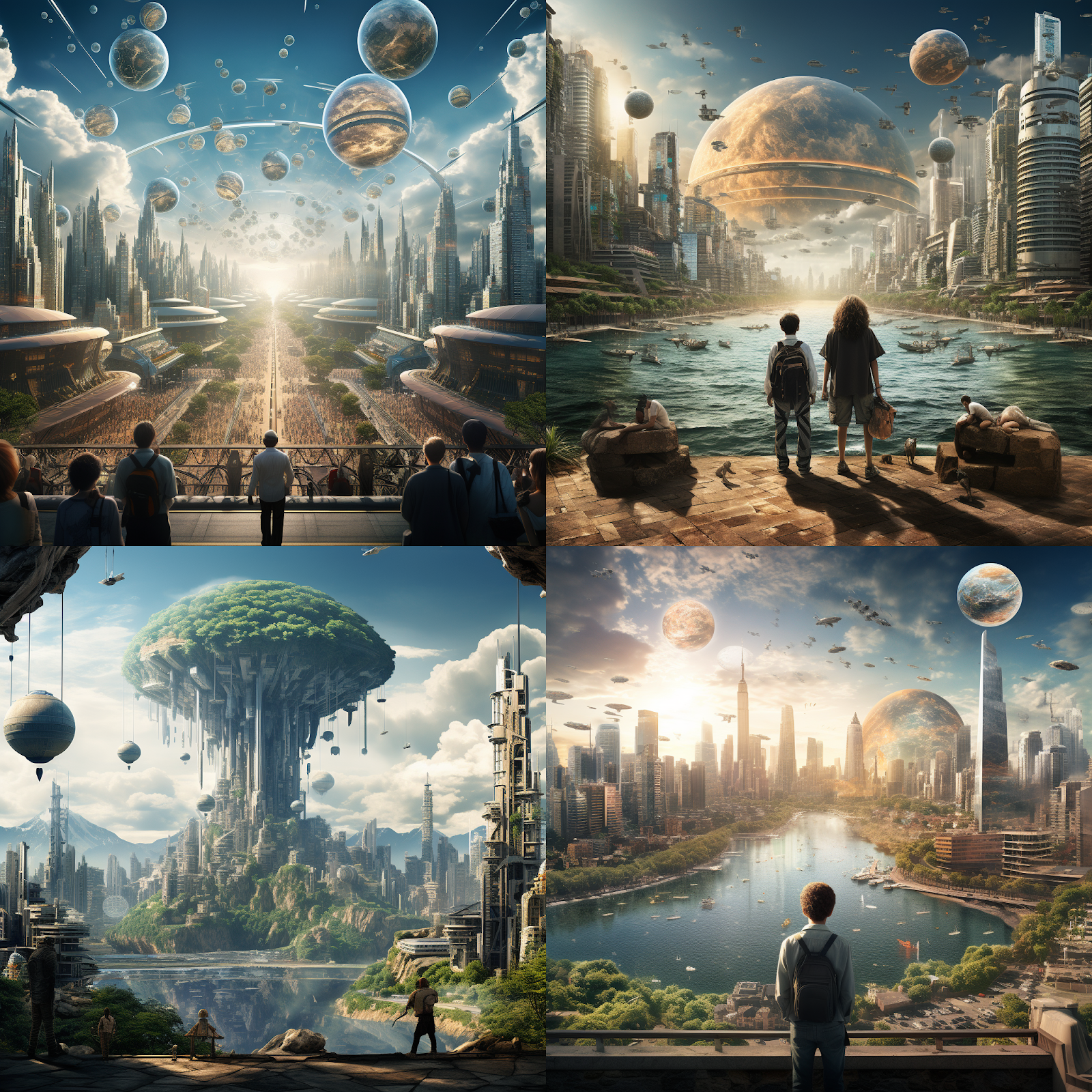What Is AI Art? How It’s Changing The Creative Landscape
As we move towards an increasingly tech-driven world, the realm of creativity is coming along for the ride. It is fascinating to see how Artificial Intelligence (AI) is changing the face of creative expression in every possible way.
What is AI Art? AI art is one remarkable example that has swept across the art world in recent years. At its core, AI art merges technology and creativity, which produces stunning visuals that are almost impossible to create manually.
Case in point, feast your eyes on these AI art examples created with Midjourney in less than 1 minute using simple prompts.
imagine: friends, fungi, happy, bright, pink, teal, green, in the style of Wes Anderson
AI Art Is All About Algorithms
At the heart of the AI Art movement are complex algorithms and machine learning. Unlike traditional art, where the human artist plays a significant role in the creation process, AI art follows a different approach.
In the creation of AI art, the human’s role is to input a written prompt, which then informs the machine learning system and algorithm to deliver a creative output. The AI system makes “decisions” of its own to produce the art, so it’s always interesting to see how a single prompt can deliver such different results!
What Is AI Art: Example With Midjourney
Midjourney is a popular AI art generation tool that I’ve really enjoyed experimenting with. Here’s an example of a piece of art that I created using the following prompt:
Imagine: animals eating tacos, outside, in a field of trees
AI Art Is Beyond Mere Visuals
What makes AI-generated art really special is the fact that it can create visuals that go well beyond what’s possible by human artists. And honestly, it’s a hell of a lot faster.
The algorithms and machine learning models employed by AI art systems have the potential to create different styles, colors, and textures, making creative possibilities limitless!
Apart from visuals and still images, AI can also create video, music, and even 3D models.
One emerging technology you’ll be seeing more of is “talking heads” or “virtual human presenter” videos. You simply enter a script, and the AI video generator will produce a video with a “real” human reading your script. To be fair, some of these videos still look and sound a little robotic, but this technology is evolving rapidly!
AI Video Generator: HourOne.ai
AI Art And Creative Control
While it’s true that AI can create visually stunning artwork, what separates it from traditional art is the element of control. Unlike conventional art, AI art systems require the artist or the user to define certain parameters or rules. These are commonly called “prompts” in art generation tools like Midjourney or Leonardo.ai.
AI art prompts can include:
Color palette (such as neons, pastels, shades of green)
Specific style (photo realistic, line drawing, pop art)
Mimic a certain artist’s style (Andy Warhol, Monet, Georgia O’Keefe)
This mix of creative control and algorithmic rules allows you to create art that breaks traditional boundaries while giving them the power to shape its outcome.
AI-Generated Art Example: Mixing Styles
Here’s an example of how you can mix styles in Midjourney that would seem nearly impossible otherwise! The prompt was:
imagine: an Andy Warhol inspired logo with dinosaurs, in pop colors, neon green, yellow, orange
Ethics In AI Art
Does AI art steal art? This question is being heavily debated as the impact of AI is becoming more noticeable in the art world. AI generated art has raised lots of questions about the legitimacy of AI artwork (especially among artists) and questions about who owns the copyright to AI-created art.
Some argue that since the AI system and algorithms used in AI art are created by humans, it is still a form of human expression. Others, however, argue that since AI systems and algorithms are responsible for creating the art, and there’s no human input in the creative process, it cannot be considered traditional art.
A similar conversation is being had around the legitimacy of written content, as tools like ChatGPT and Jasper are being used to write everything from books to movie scripts!
The Future Of AI-Generated Art
AI-generated content and art are just getting started. It’s not just about creating fanciful visuals; it’s slowly revolutionizing the way we perceive and appreciate art.
It’s clear there’s still a lot to figure out as AI technology evolves and becomes more sophisticated. There is little doubt, though, that we’ll see even more applications of AI art, including photorealistic images, to even producing fully immersive experiences.
The possibilities of AI art are vast and exciting, and we’re here for it!
Conclusion
AI-generated art is a trailblazing art form that’s changing the creative landscape and pushing the boundaries of what art can be. As technology progresses, so too will the possibilities and applications of AI art.
The impact of AI on the art world and the creative field, in general, will be significant. Whether or not AI art can be considered traditional art, there’s no denying that it is an art form in its own right and worth exploring.
I’ll leave you with this fun image created by Midjourney with the prompt:
imagine: what the world will look like in 100 years
Only time will tell 😉




